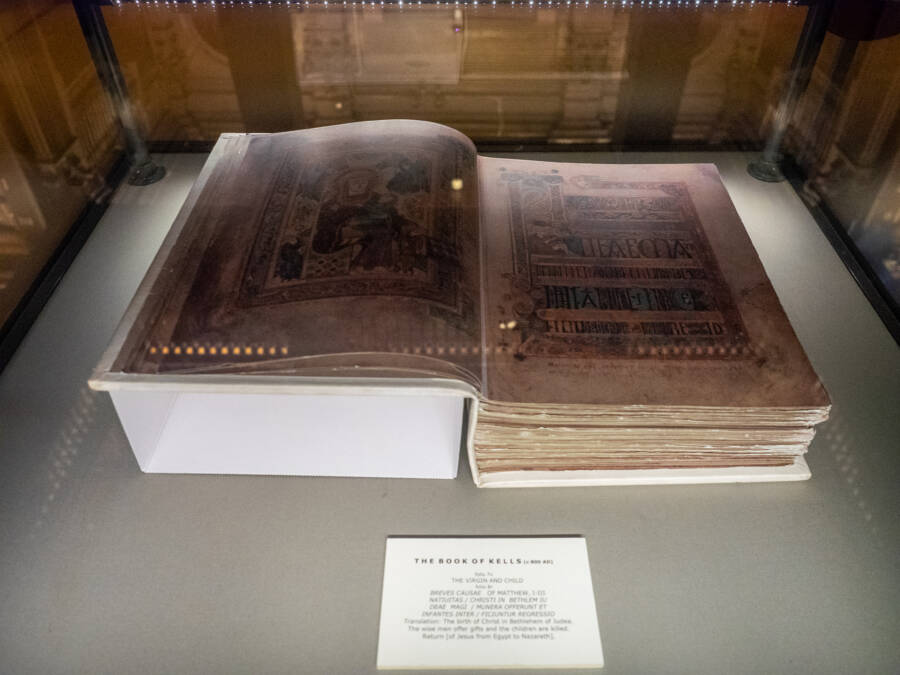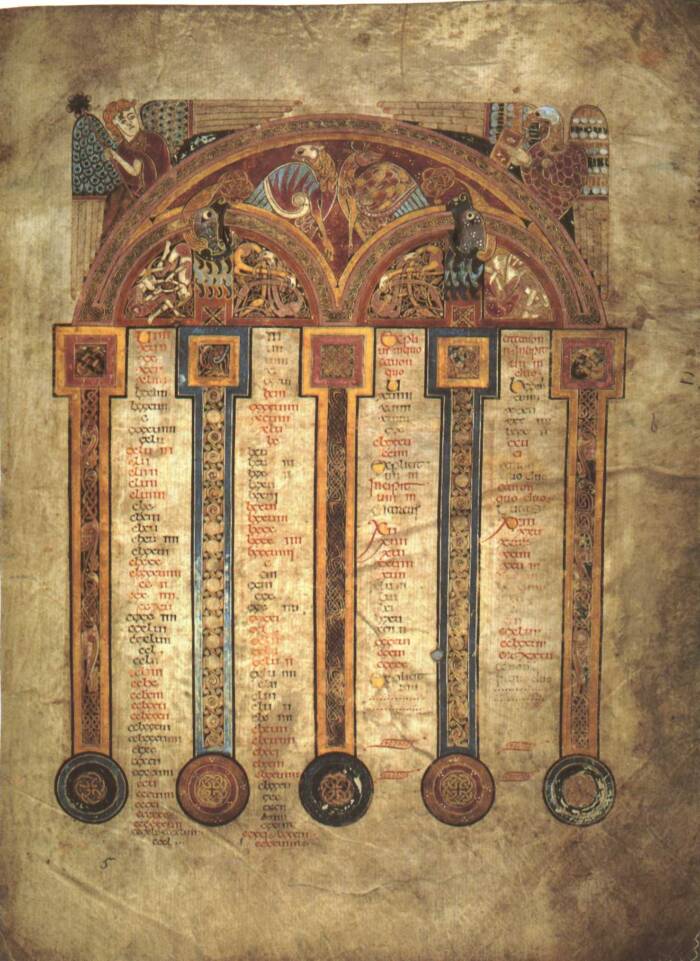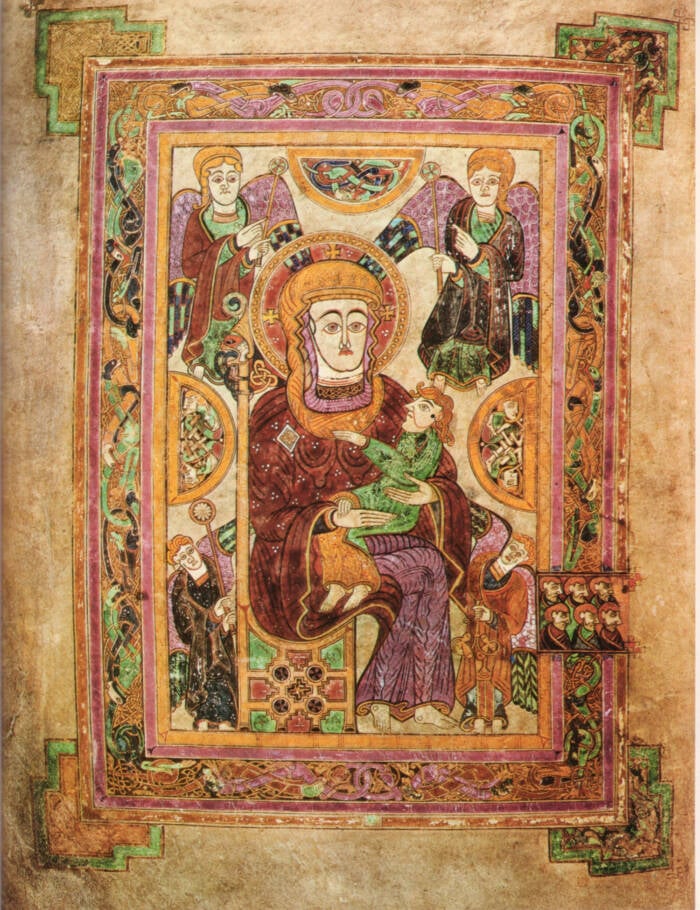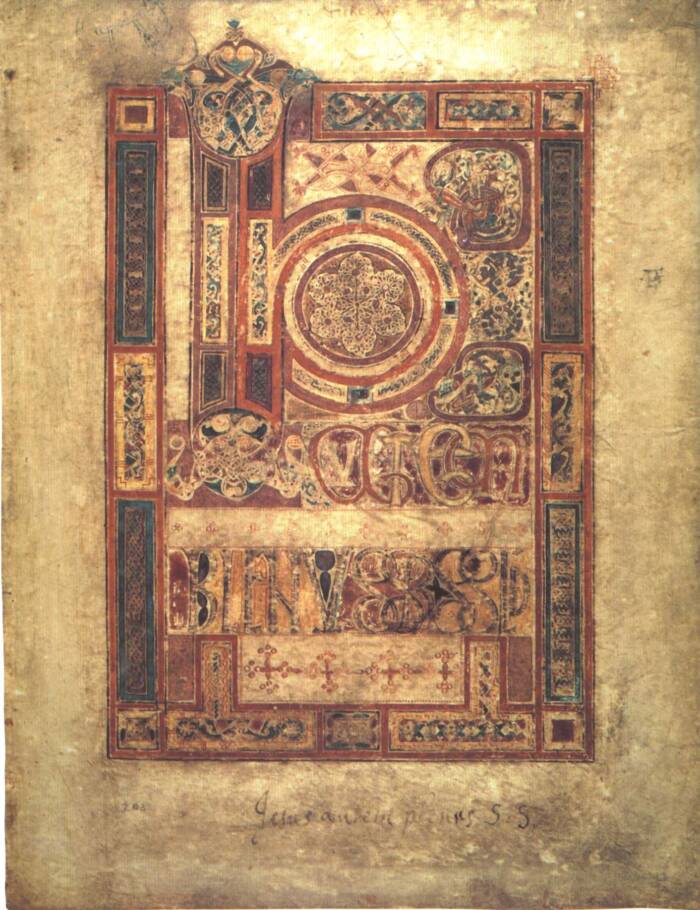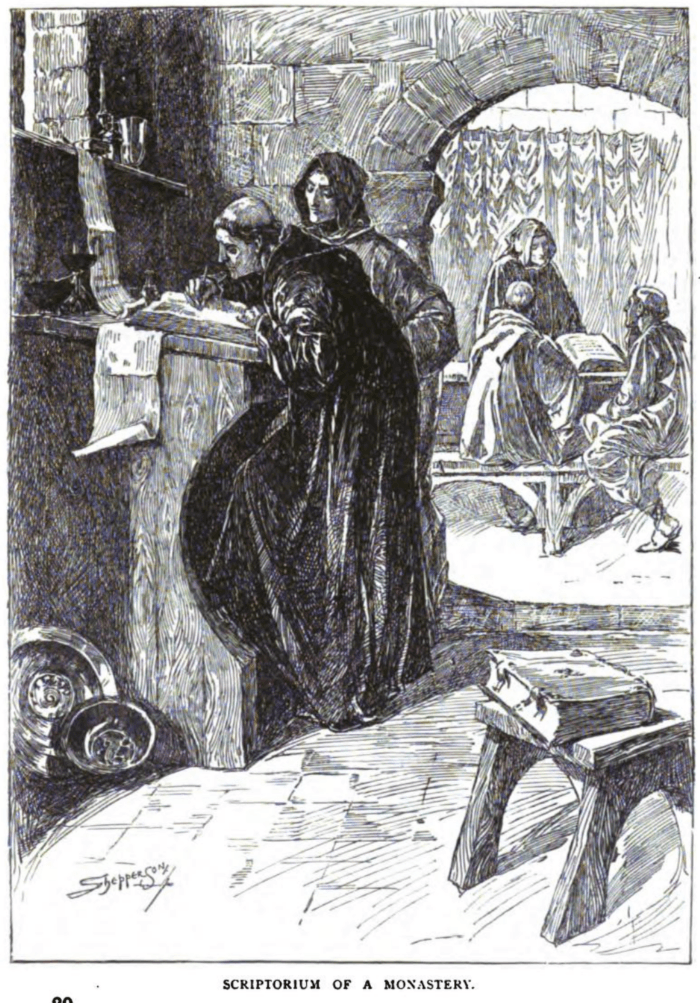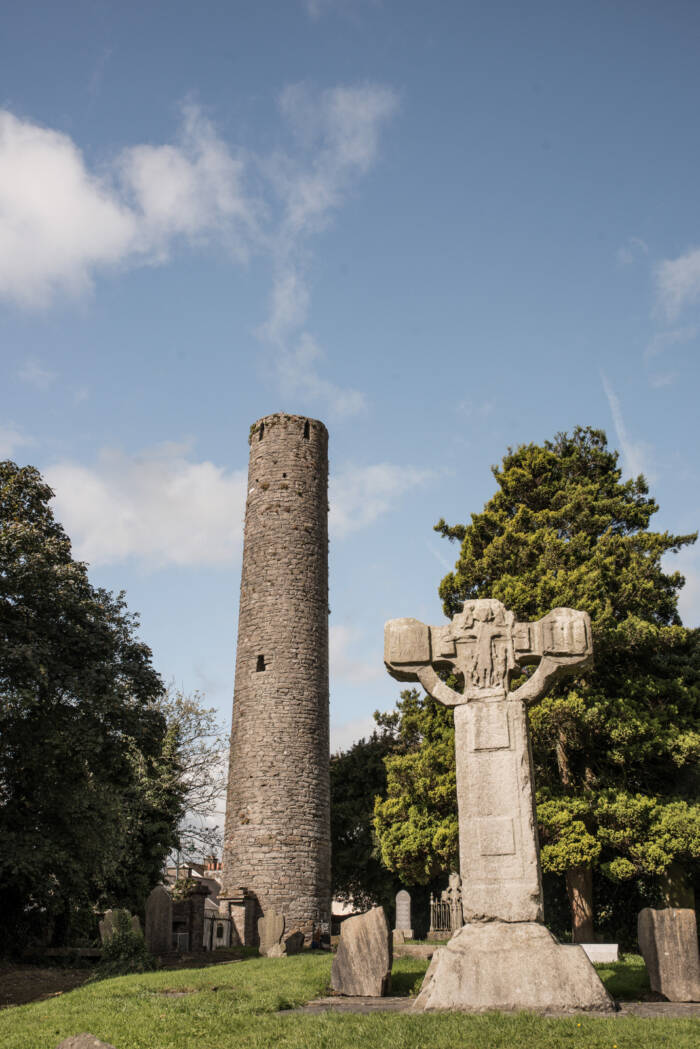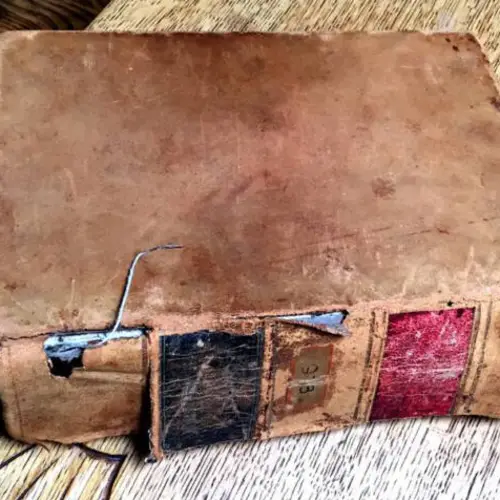Created by monks in medieval Scotland, the exquisitely illustrated Book of Kells is widely regarded as the "chief treasure of the Western world."
Every year, hundreds of thousands of visitors flock to Dublin's magnificent Trinity College Library to see a rare treasure: the Book of Kells, an illuminated ninth-century manuscript featuring a hand-painted copy of the New Testament.
Using stretched calfskin as paper, the Celtic monks who created the book around 800 C.E. painstakingly illustrated each of its 680 pages in vivid color. Today, many experts consider the Book of Kells to be the finest manuscript of its kind. But it's a miracle the book survived for us to enjoy at all.
In its 1,200-year history, the Book of Kells has endured raids, theft, and multiple wars. At one point, it was even buried in a ditch. Still, it remained in shockingly good condition, allowing generations to view it in all of its majesty.
Read on to learn more about the Book of Kells' turbulent history, and peruse the photos in the slideshow above to see why it is now considered one of Ireland's most valued national treasures.
Inside The "Chief Treasure Of The Western World"
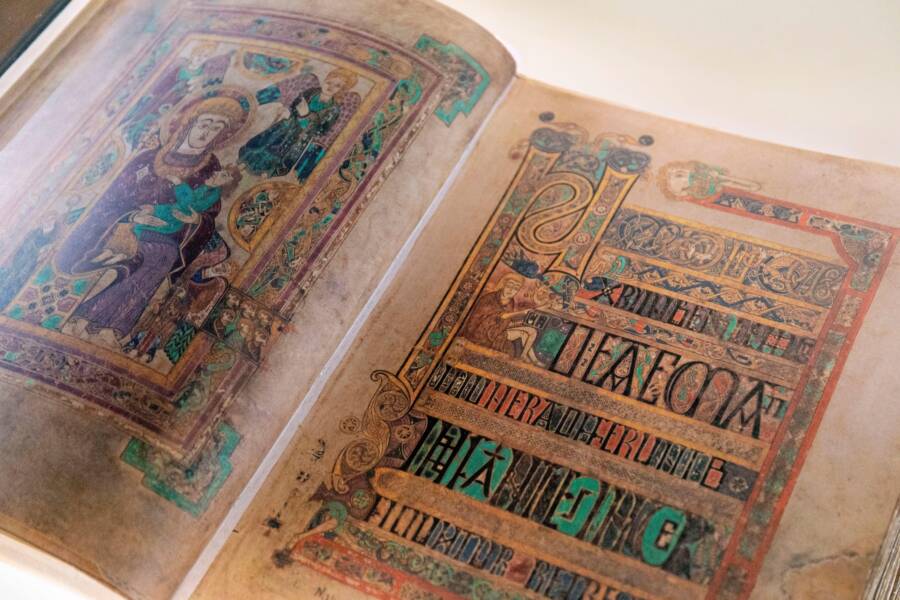
Hemis / Alamy Stock PhotoToday, the Book of Kells is on display in Trinity College's Old Library in Dublin.
A marvel of medieval devotional art and calligraphy, the Book of Kells is a hand-printed copy of the New Testament. Experts believe that three different artists illustrated the pages, and three or four scribes copied the text.
Each of the four Gospels (Matthew, Mark, Luke, and John) are prefaced by texts like summaries, indexes, and commentary. Notably, the Gospel of John is incomplete, indicating either that the pages were lost or the text was never finished.
The manuscript measures about 13 inches wide by 10 inches high; it's believed that it was once larger, but was cropped down during a rebinding centuries ago. Each of the pages is made of stretched calfskin, or vellum, so that some pages are like leather while others are so thin they're almost translucent.
The medieval monks who created the book hand-painted each of its 680 pages using around 10 different domestic and imported pigments. At first, researchers thought the blue pigment was ultramarine, a rare ink from the mineral lapis lazuli.
As it turns out, the blue comes from common indigo and woad, which is sourced from a plant native to northern Europe and would have been much easier to access. The yellows come from an arsenic sulfide mineral, the reds from lead or from unknown organic materials. Verdigris, from corroded copper, was used to make the greens.
The pages are lavishly illustrated, featuring exquisite renderings of humans, beasts, Celtic knots, and intricate, swirling patterns. Some of the details are so intricate, in fact, that you need a magnifying glass to see them properly.
While many of the pages primarily feature text decorated with small images, the book also boasts dozens of full-page illustrations. Perhaps the most notable of these folios is the Chi-Rho page, an ornate depiction of Jesus Christ's monogram that Trinity College called "the single most famous page in medieval art."
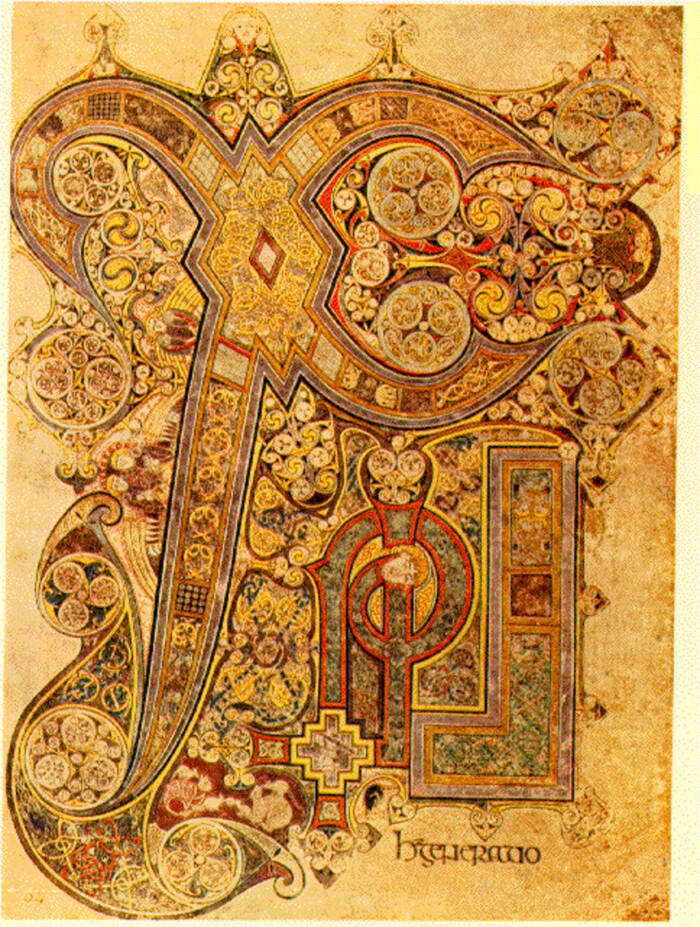
The Picture Art Collection / Alamy Stock PhotoThe Chi-Rho page precedes the nativity story as told by Matthew. The Greek characters "Chi" and "Rho" are an abbreviation of "Christ."
How The Book Of Kells Arrived At Trinity College
The Celtic monks in the order of St. Columba crafted the Book of Kells sometime around 800 C.E., though there's some debate over the exact circumstances of its creation.
Some experts believe it was made entirely on the small island of Iona off the coast of Scotland, where the monks lived until the early ninth century. Others suspect the monks may have finished it after moving to the Abbey of Kells in County Meath, Ireland, the monastery for which the book was named.
Originally, the book was bound in an opulent gold and bejeweled cover. Because the manuscript was so ornate, researchers believe it was intended for ceremonial use, only to be brought out for special religious occasions like Easter.

Erin Brierley/Wikimedia Commons
The Isle of Iona, where the monks are believed to have started writing the Book of Kells.
However, life on the Isle of Iona in the ninth century was volatile. During that time, Viking attacks were common, making the Book of Kells susceptible to destruction or theft. After one particularly violent Viking raid in 806 C.E., the monks of St. Columba left Iona and sailed to Ireland, relocating to the Abbey of Kells.
Then, as noted in an 11th-century entry in the "Annals of Ulster," the Book of Kells was stolen in 1006. There was every reason to believe that this treasured manuscript was lost for good. However, according to ThoughtCo, it was miraculously found soon after, half-buried in a ditch — minus its beautiful jeweled cover and a few pages.
In the 17th century, a multitude of wars broke out in Ireland, and the Book of Kells was sent to Dublin for safekeeping in 1653. A few years later, the Archbishop of Meath gave it to Trinity College Dublin, where it remains to this day.
The Book Of Kells Today
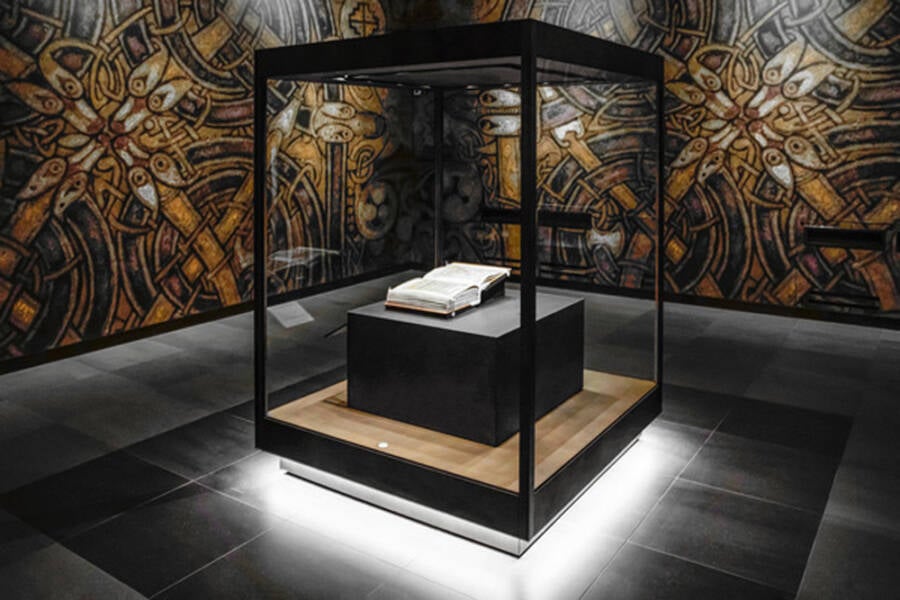
Sandro Goppion/Wikimedia CommonsThe Book of Kells measures just 13 x 10 inches as a result of being cropped during a rebinding.
Today, the Book of Kells is stored in Trinity College's opulent Old Library, one of Dublin's top tourist destinations. In order to preserve it, the book is kept safe inside a display case, where just two of its pages are shown at a time on rotation.
Over the years, archivists have carefully rebound the book multiple times in an attempt to keep this work of art as well-preserved as possible. Appropriately, Saint Columba, who founded the order that created the book, was the patron saint of bookbinders. Experts say only about 30 folios have been lost since the book's creation.
Fortunately, thanks to modern technology, anyone with internet access can get a glimpse of the Book of Kells without booking a flight to Ireland. Trinity College has digitized the manuscript in its entirety so that religious devotees and art lovers alike can pore over every detail of this medieval marvel from the comfort of their own homes.
After exploring Ireland's treasured Book of Kells, read about the dramatic history of Ireland's medieval Dunluce Castle. Then, check out the history of the Codex Gigas, the medieval manuscript known as the "Devil's Bible."

